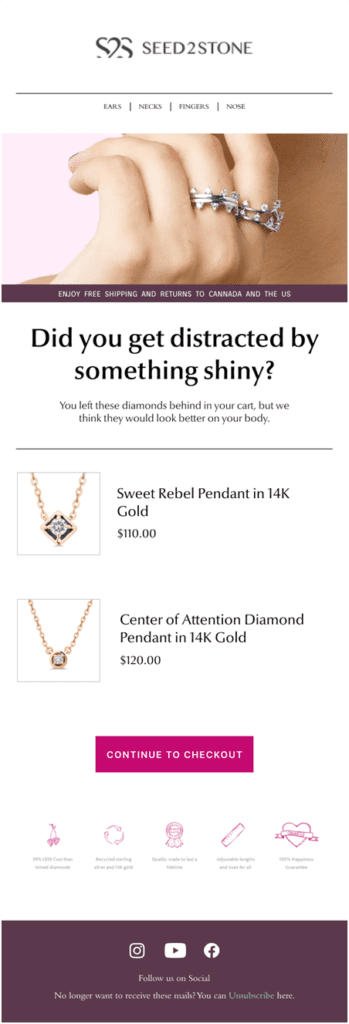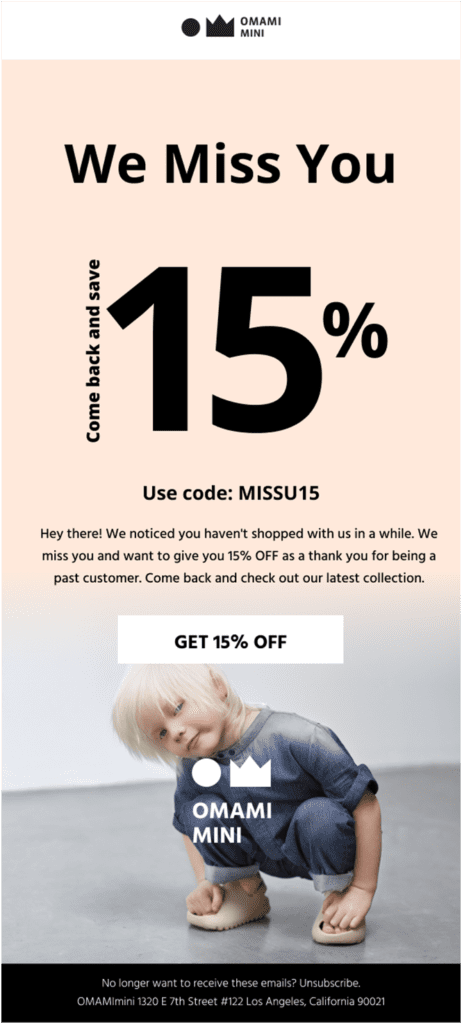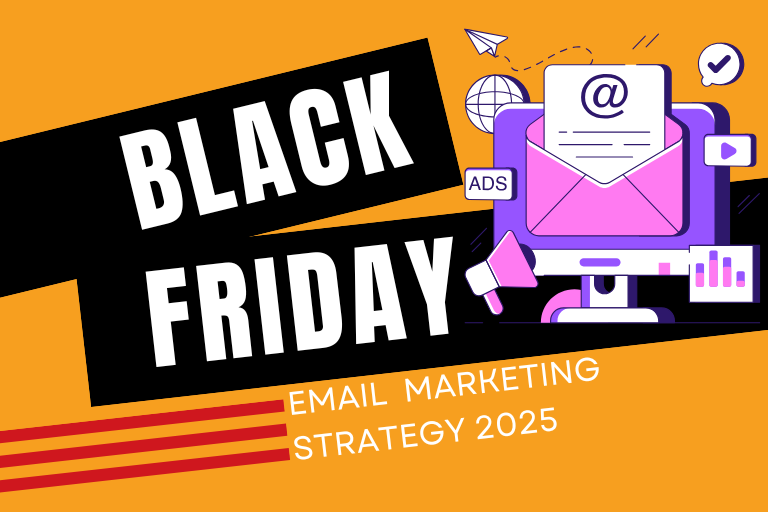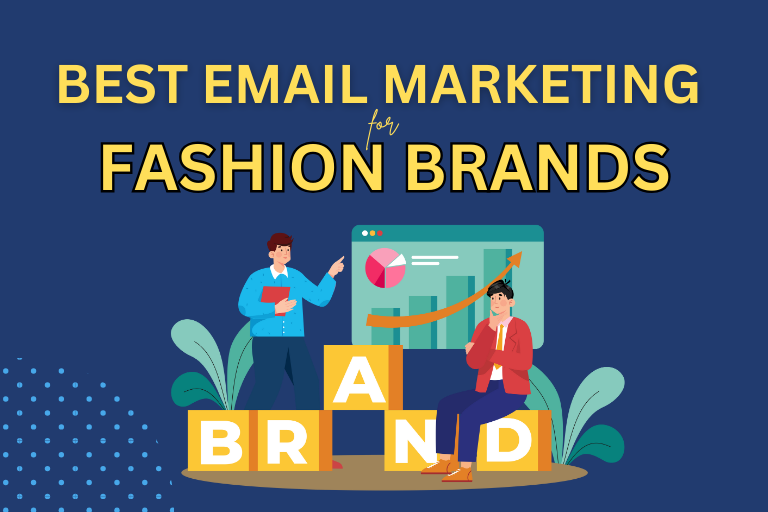Did you know email marketing is the cheapest way to grow your business? According to research, for every $1 you spend on email marketing, you can expect to make $36 back.
However, simply sending out random emails to your customers will not give you the type of results you need. To see great results, you must set up automated email flows that reach the right customers at just the right time.
Today, we will be sharing with you the most important flows in email marketing that you need to implement to see great results.
Benefits of Email Marketing Flows for E-commerce
Let us quickly understand the advantages that email flows give to your eCommerce brand:
● Improve Customer Engagement
Some businesses only send emails when you buy something, while others keep in touch regularly without overdoing it.
They simply share new products, special deals, or just check-in. People appreciate feeling valued and receiving messages that matter to them.
Automated emails respond to customer actions, helping a brand stay relevant and connect with customers at the right time.
● Lower Customer Acquisition Costs
Using email flows is a smart way to lower costs while attracting new customers and increasing profits over time. When customers receive emails that feel relevant to them, they build a stronger connection with the brand and are more likely to make repeat purchases, boosting sales.
Automation also saves effort by eliminating the need to send emails manually. Instead of sending the same message to everyone, targeted emails reach the right audience at the perfect time.
Major brands like Gymshark and Sephora use this strategy to turn interested shoppers into actual buyers.
● Improve Customer Relationships
Giving special discounts, asking for feedback, and reminding customers about items left in their cart show that your brand cares.
A good example is Kohl. They have a strong e-commerce email marketing strategy. They send personalized product suggestions and reminders to their customers.

Their emails often feature exclusive deals for “Kohl’s Rewards” members, offering perks like birthday gifts and special discounts. This keeps customers engaged, increases sales, and builds long-term loyalty.
Types of Flows in Email Marketing
Well-planned email sequences can be very effective, but how do you create a strong email flow?
The answers will vary based on your business, but some email flows can benefit almost any company.
Here are eight types of flows in email marketing that can keep your brand afloat:
1. Welcome Emails

A welcome series is a great way to greet new subscribers and introduce them to your brand. It’s a chance to show what makes your brand special and share your story while starting a real connection with them.
You can also use these emails to encourage people to follow your social media pages and ask how they’d like to receive future messages from you.
2. Browse Abandonment Emails

Shopping in a store is exciting because you can explore different products, learn about the brand, and see all your choices. You can create a similar experience through email or text.
A browse abandonment email helps with this. It sends messages to customers based on the products they viewed on your online store. You can decide when the email is sent and who receives it.
This is similar to an abandoned cart email but with one key difference. Browse abandonment emails remind customers about items they looked at, even if they didn’t add them to their cart.
Both can be part of your strategy to re-engage shoppers. Let’s find out more about how the cart abandonment emails works.
3. Cart Abandonment Emails

This type of flow is triggered when a customer visits your eCommerce site, views a product, and adds it to their cart, but doesn’t complete the purchase.
In this case, the customer has shown clear interest by clicking on the product, and adding it to the cart, but did not complete the purchase due to certain reasons.
7 out of 10 customers leave their carts behind, so recovering those lost sales is important.
Hence, these emails remind customers to finish their purchase without being too forceful.
It should include the items they left in their cart, a discount code if possible, and clear steps on how to complete their order.
4. Thank You Emails

A thank-you email, sent after a purchase, is a great way to build customer loyalty by showing appreciation.
It can make a big difference, especially with so many online shopping options. When someone chooses your products, let them know you value them with a personalized message.
For example, some brands send a warm, visually appealing thank-you email featuring pictures of their products, similar to an Instagram feed. This makes the message feel more engaging and special.
5. Review Request Emails

When a customer gets their order, it’s important to find out how they feel about your product. Did they love it? Were they happy with their experience? Their feedback is super valuable because it helps you improve and shows others that your product is worth buying.
But asking for reviews one by one isn’t practical, especially if you have lots of customers. It takes too much time and effort, and you might miss some people. That’s why you need a review request flow.
A review request flow is an automated process that sends customers a message after their order is delivered. It’s a simple and efficient way to ask for reviews and testimonials without doing it manually every single time.
6. Cross-sell and Upsell Emails

Sometimes, having too many choices in your online store can feel overwhelming. Other times, shoppers may not have the time to browse everything.
A cross-sell or upsell email can help by suggesting products they might like. You can highlight your best-selling items or use automated recommendations based on what they’ve bought before or what similar customers have chosen.
For instance, some brands send emails showing related products with a clear and colorful call-to-action button, making it easy for customers to explore and buy more.
7. Post-Purchase Winback Emails

You don’t need to panic if a customer scales through the post-purchase cross-sell and upsell flow without making a second purchase.
What you need to do is to set up a Winback flow. This flow is designed to encourage more purchases through a series of emails.
A very important part of win-back emails is studying your customers properly to know when they will likely make a second purchase and when they become lapsed customers.
Once you understand your customer’s buying journey, you can use that information to set up a post-purchase flow that encourages them to return before they lose interest.
8. Back-in-stock Flow

Back-in-stock flows let customers know when an item they wanted is available again.
These flows create excitement by making the product feel popular and in demand. This encourages customers to buy it quickly before it runs out again.
How to Get Started with Ecommerce Email Flows
With the right tools and strategy, you can set up automated emails that engage customers, boost sales, and save time. Here’s how to do it:
● Choose the right platform
You need a ecommerce email marketing automation platform that can centralize customer data, segment your audience, and then send triggered emails based on your dynamic segments.
Klaviyo is purpose-built for e-commerce, with 350+ integrations and advanced automation capabilities.
On the other hand, Omnisend is great for multi-channel marketing, while MailChimp is a popular choice for beginners with easy-to-use templates. s, making it one of the best options for any e-commerce brand.
● Segment your audience
Want to send the right message to the right people? Use real-time customer data to personalize your emails.
With dynamic segmentation, you set the rules, and the system automatically groups customers based on their behavior.
● Test and optimize
The best way to get better results is to keep testing. Try different email styles, subject lines, or offers and see what works.
When you pay attention to open rates, clicks, and conversions, you’ll start spotting trends. The more you tweak and learn, the better your emails will get.
Conclusion
Implementing the various email marketing flows will not only make your customers complete their purchases, but it will also keep them coming back.
If you need a team of experts to set up flows that are proven to work, for your eCommerce brand, you can book a free discovery call to see how we can help.



